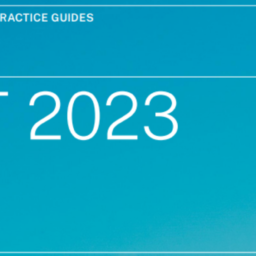On 15 June 2018 the Act on Supporting New Investments (“the Act”) was announced in the Journal of Laws. The Act, which became effective as of 30 June 2018, will replace the current system of support offered by Special Economic Zones (“SEZ”).
The Act provides new regulations regarding the availability of State aid for new investments, similar to the currently applicable SEZ regulations; nevertheless it introduces a number of new solutions. This alert summarizes the most important information regarding the new regulations set forth in the Act and in the drafts of secondary legislation which were made publicly available.
- The entire area of Poland is eligible for support
The key feature of the new Act is that new investments may potentially be covered by State aid irrespective of their location – the territorial restriction in the form of the current SEZ boundaries will no longer exist. It will also not be required to apply for expanding the boundaries of the SEZ, which was a burdensome and time-consuming procedure. The new regulations divide Poland into 14 Economic Areas, each of which is assigned to one of the current SEZ Managers. The new Economic Areas, unlike in many cases the current SEZ territories, will have a considerably more coherent territory, which means that the areas assigned to the individual SEZ Managers will be closer to the Managers’ seats.
- Criteria for the availability of aid
To be eligible for State aid each new investment will have to satisfy quantitative and qualitative criteria. The criteria have not been set forth in the act itself – the Act refers to the secondary legislation in this respect.Quantitative criteria
The quantitative criteria have been defined as the minimum amount of eligible costs a project depending on the unemployment rate in the poviat [district] in which the investment is to be located. For an investment to be eligible for state aid, the quantitative criteria have to be satisfied in full. The highest the unemployment rate in a poviat, the less restrictive the requirements regarding the minimum eligible costs of the new investment will be. The present average unemployment rate in Poland is 7% (as at 30 June 2017).
With regard to production investments, in poviats with the lowest unemployment rates the quantitative criteria will be as much as PLN 100 million for large enterprises, PLN 20 million for medium-sized enterprises, PLN 5million for small enterprises and PLN 2 million for micro-enterprises. In poviats with the highest unemployment rates, the criteria will be PLN 10 million for large enterprises, PLN 2 million for medium-sized enterprises, PLN 500 thousand for small enterprises and PLN 200 thousand for micro-enterprises.
For investments in the field of modern services for business (such as Research and Development centers) the quantitative criteria will be reduced by 95%.
Qualitative criteria
Every single investment will also be reviewed from the perspective of qualitative criteria and, to be granted support, it will principally have to score at least 60% points under these criteria (in higher aid intensity areas the threshold will be lower, for example in the Podkarpackie voivodship it will be required to score only 40% points). These criteria cover such investment aspects as: creation of specialized jobs, employment predominantly on the basis of employment agreements, the research and development component, cooperation with academic and research centers and with industry schools, contributing to the development of industry clusters, location of investments in the territories which are most in need of support, have by the highest unemployment rate, etc.
- Available state aid
Tax exemptions
The measure of state aid provided for by the Act will consist in the income tax exemption – as it is the case in the current system of SEZ support. The exemption will constitute regional investment aid and the same principles for granting state aid will continue to apply in this respect.
The eligibility period
The eligibility period for the income tax exemption will depend on the regional investment aid intensity available in the area in which the investment is to be located. The larger the intensity, the longer the tax exemption period available. For example, in Warsaw the exemption will be available for only 10 years, in the Łodź voivodship for 12 years, and in the Podkarpacie region for 15 years. Additionally, if the investment is located on land which is covered by the currently existing SEZ, the eligibility period for the exemption will always be 15 years.
Aid intensity
The aid intensity under the rules of the new Act will be determined on the basis of the Regional Aid Map (in the current drafts of secondary legislation the earlier idea of reducing the maximum aid intensity in low unemployment poviats was given up). For small and medium-sized enterprises, the aid intensity will be increased by 20 % for small enterprises and by 10 % for medium-sized enterprises (this does not apply to large projects, that is such with eligible costs exceed EUR 50 million).
- Decisions on granting the support and the procedure for issuance
At present, an enterprise which wants to obtain State aid within an SEZ had to be granted a permit to conduct business activity in the territory of SEZ. The permits are granted by way of a tender procedure (if an investor also wants to obtain legal title to a real property located in the territory of an SEZ) or by way of negotiations (if the investor already has a legal title to a real property located in the territory of an SEZ and only seeks a Permit). The Act replaces the zone permits with a “decision on support”. Such decisions will be granted as part of an ordinary administrative procedure (that is, without holding a tender or negotiations). The decisions on support will be granted by the Minister of Business and Technology, however in practice – as it is currently the case – the decisions will be granted by the SEZ Managers, on the basis of an authorization.As it is currently the case for zone permits, the decisions on support will define the key parameters of the new investment (first and foremost, the investment outlays and the number of new jobs), to be satisfied by the investor.
- Cumulative accounting for the operations conducted under more than one decision on support and/or zone permit
So far, the enterprises which were granted more than one zone permit faced the problem of accounting for the operations conducted in connection with each individual investment covered by each individual permit they held. The tax authorities often expressed the position that the operations connected with each individual permit should be accounted for separately, that is revenues and costs should be allocated to each permit individually. Some enterprises obtained private tax rulings which allowed them to account for the operations within the SEZ cumulatively (for example, by allocating the total revenues and costs first to one permit and, having reached the state aid ceiling, to the subsequent one), however, such private tax rulings were not a standard and numerous cases were ultimately referred to administrative courts.The lower chamber of the Parliament analyzed and discussed this issue, to reach a conclusion whereby the final version of the Act contained a regulation regarding the cumulative accounting for the operations conducted under more than one decision on support and/or zone permit, in the order the decisions/permits were issued. This regulation will certainly be very convenient for the enterprises.
- Effectiveness of the new provisions and continued validity of the current permits
The Act became effective on 30 June 2018. The proceedings for a zone permit opened before the effective date of the Act will continue in accordance with the regulations applicable so far. Currently work is pending on the secondary legislation.The current zone permits will remain valid on the terms and conditions applicable so far. The currently operating SEZ will operate until the end of 2026, when the current permits will become invalid.










